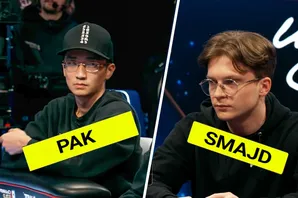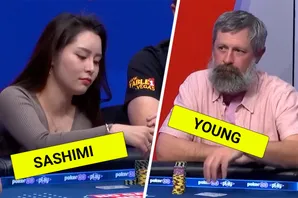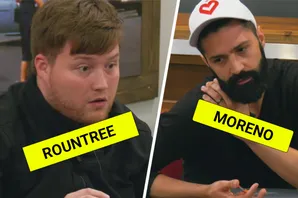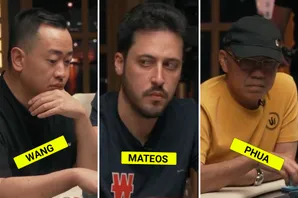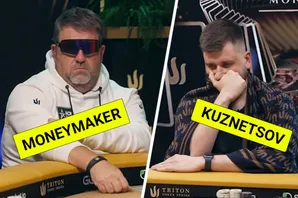Dara O'Kearney is a professional player, coach and author - as well as commentator, podcast host and more - with a sharp eye for analyzing tournament structures and devising effective strategies. Together with Barry Carter he has written the successful 'Poker Solved' series of books on poker strategy.
Coaching and study materials are available at Simplify Poker, including a new free video course on 9 huge errors that old-school players make - see more details below.
One thing which signals an amateur player vs a studied modern professional is how they play small pocket pairs as the big blind. Quite simply, the amateur player set-mines too much.
Let’s say the button opens and you have 40bbs effective, and look down at 
It seems perfectly reasonable to play this as a set-mine. It only costs an extra big blind to see the flop and you can get away cheaply if you miss.
It’s nice to flop sets, but that only happens roughly one-in-seven times. Playing small pairs only as set-mines means you potentially lose a lot of equity the times you don’t make a set.
You often have to fold the best hand on high-card flops. When you have the worst hand, you potentially lose more money than you should on flops that seem safe, like a 
Crunching the numbers
This is how GTO Wizard plays as the big blind with 40bbs effective and the button has opened:
If you are unfamiliar with solvers, this is how every hand plays against a button open. The blue squares are folds, so for example we always fold 
As you can see, the primary action with small pairs - 
This may seem crazy to some and many would argue we are only going to get called if we are beaten. Let’s explore how the button should respond to the shove:
It’s true that all the pairs that call are ahead of 
That doesn’t seem great, but look at how many hands fold. We make the button fold 77% of the time and we are flipping a little under half the time when called. That’s a really good result for a measly pair of fours, especially because almost every hand that folds is flipping against us. Shoving is much easier to do than defending the flop, three overcards coming and we don’t know what to do.
In practice, this tactic might be even more successful than GTO suggests. Can you really see 
So when do we set-mine with small pairs?
This is the big blind response in the same spot, the only difference is it's the under-the-gun player who has opened:
There is no shoving this time and all the small pairs call.
Why the difference in strategy? Let’s compare the under-the-gun and button ranges.
Under the gun:
As you can see, the button is 2.5 times wider than under-the-gun.
The button is very wide, so when we flop a set against them, they most likely will have missed the flop and we don’t get paid. Under-the-gun is very tight, they are much more likely to have a strong hand on the flop that will pay off our set.
The button is so wide, however, that they will have to fold a lot of the time if we shove. We are much more likely to walk into a very strong hand when we shove into the under-the-gun player.
It’s better to flop a set against a player who has something in the first place. When the opponent has a very wide range, the best way to exploit them is with aggression, even it is with a small pair.
So get out of the habit of mindlessly set-mining in these spots; you are missing out on a lot of value.
Set-mining too much is one of nine huge errors that old-school players make in a new free video course from Dara O’Kearney at Simplify Poker. Other errors include bluffing your best draws and not defending wide enough. You can watch this free masterclass on old school leaks at Simplify Poker.
Featured image courtesy of World Poker Tour




































